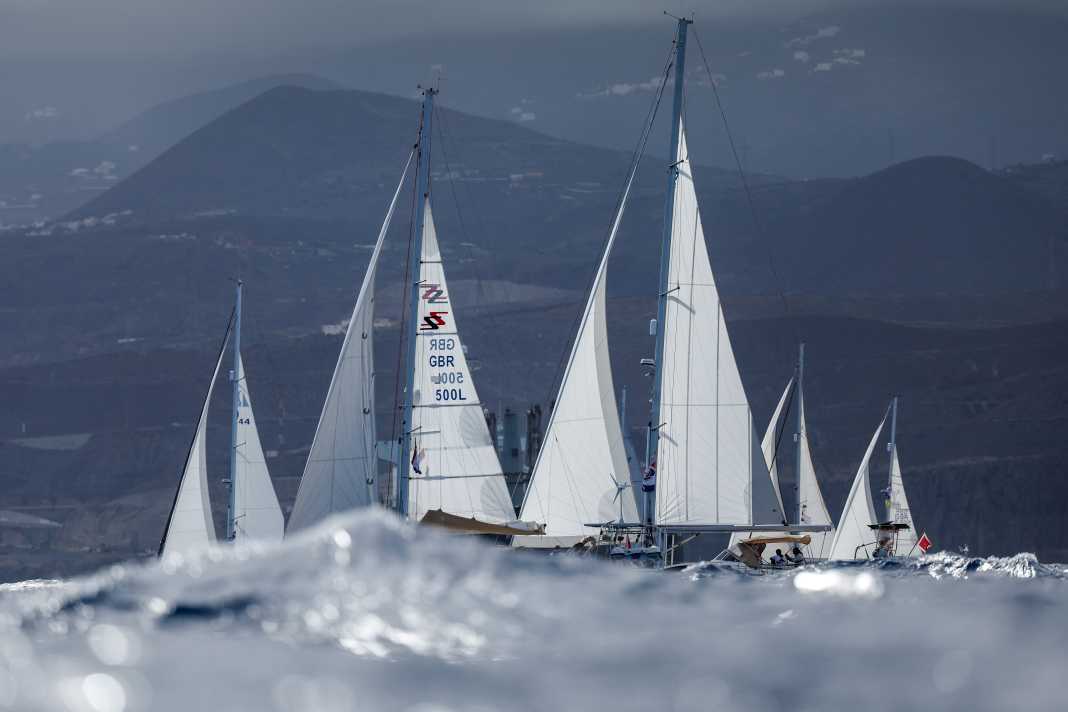Blue water: 86 yachts set off on a transatlantic adventure with the ARC+
Pascal Schürmann
· 10.11.2025






Long journey
On the first leg to the Cape Verde island of Sao Vicente, around 850 nautical miles lie ahead of the 86 participating crews. They come from 26 countries, eight of which are sailing under the German flag. Once they reach the port of Mindelo in the south, they will continue on to Grenada after a break of several days. The sailors will then have another 2,150 nautical miles to sail to the Caribbean island.
Yesterday's start took place under the eyes of numerous friends, family members and local spectators who cheered on the sailors from the harbour pier in Las Palmas. The Spanish customs patrol boat "Condor" acted as the starting vessel; the starting line had been laid out half a nautical mile south of the harbour of Las Palmas.
Challenging conditions at the start
Due to strong swell, the conditions at the start were quite challenging. The wind was blowing from the north-east at 15 to 18 knots. "The start went really well. It was a spectacular end to the last two weeks of preparation here in Las Palmas de Gran Canaria," said Paul Tetlow, Managing Director of the World Cruising Club. "The wind conditions for the next few days promise steady sailing conditions which should allow the crews to develop a good routine at sea," added Tetlow.
More on the topic:
The first to set off yesterday at 12.45pm local time were 30 multihulls. Nick Philllips and his family on board their Lagoon 60 "Nicara" and Jean Jullien's brand new Outremer 55-2 "Enjoy the Silence" made the most of the favourable conditions and got off to the best start. Robin Bader, who sails one of the smallest multihulls in the fleet on board the Excess 11 "Kasafari", said before the start: "The preparations went really well. We were surprised by the provisions, as I have never bought so much food before. And we realised that this requires a lot of planning in advance. The ARC+ programme helps to gain confidence as you can talk to experienced experts, but also to other participants who are making their first Atlantic crossing."
Cruising sailors with ambitions at the start
A quarter of an hour after the catamarans, the 56 boats in the Cruising and Open Division set off. Despite the cruising nature of the event, many crews took things seriously: within a minute, almost half of the boats had crossed the line and were heading south. Richard Hutchings' British Oyster 595 "XoXo" then led the Cruising Division, followed by Linn Eve Krogholm's Norwegian Jeanneau Sun Odyssey 50DS "Eveline" and Ignacio Suárez' Spanish Wauquiez 55 "Gorila".
Shortly before setting sail, the crew of the Sunbeam 53 "Vision" summarised their days in Las Palmas as follows: "We are overwhelmed by all the friendships we have made in just a few weeks here in Las Palmas. It gives us confidence and joy to be part of this big sailing family."
First about a week, then two to three more weeks
The first leg to the Cape Verde Islands will take between five and seven days for most of the crews. Upon arrival, they will have time to replenish their supplies before setting sail for Grenada on 21 November. The second leg for most boats usually lasts between 14 and 18 days - a journey that will create lifelong memories.
More on the topic:
While some are now underway, others are still in the middle of their preparations. In Las Palmas, the participants of the regular ARC will be preparing for their Atlantic passage in the coming days. This will take them from the Canary Islands to St Lucia in the Caribbean without a stopover. The start is the weekend after next.
The ARC+ in figures:
Stage 1:
- Start: 9 November 2025, Las Palmas de Gran Canaria
- Destination: Mindelo, Cape Verde Islands
- Distance: 850 nautical miles
- Expected duration: 5-7 days
Stage 2:
- Start: 21 November 2025, Mindelo, Cape Verde Islands
- Destination: Grenada, Caribbean
- Distance: 2150 nautical miles
- Expected duration: 14-18 days
Conclusion:
- Award ceremony: 11 December 2025, Grenada

